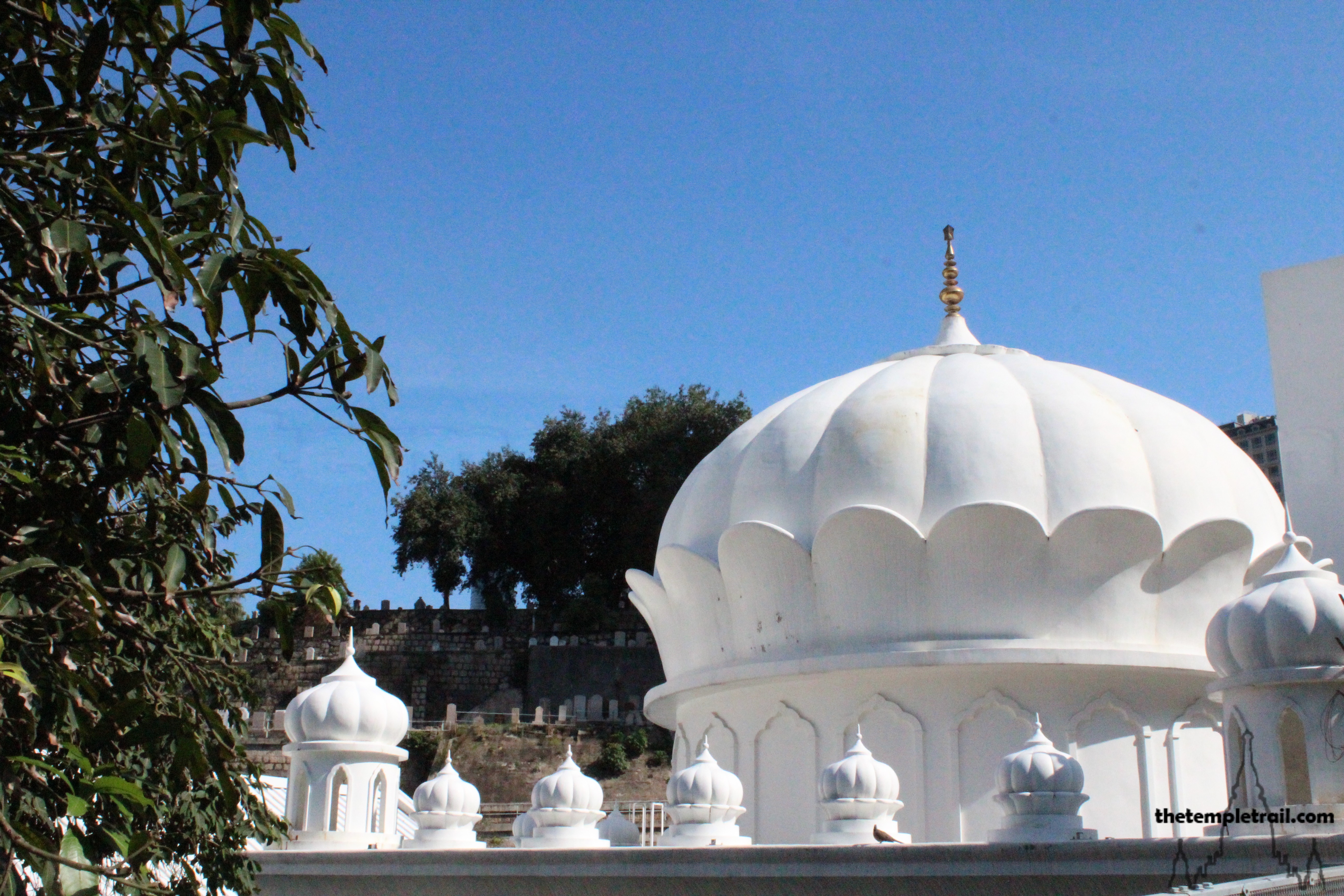Getting off the busy MTR train at Wan Chai throws you out of the frying pan and into the fire. The crowded station sets off your natural fight instinct and you try to carve your way through the seething masses. The flow of humans carries you toward the exit and after a brief spell of moderately easy going, your walk takes you through the streets of Wan Chai market, where it is once more time to play sardines. Finally breaking free, you travel along the larger but quieter Queens Road East. The way ululates up and down following the gentle hills that, before the extensive land reclamation, once felt the gentle lapping of the sea. As you come to a large intersection, you see the bright white of your destination with the saffron Nishan Sahib flags flying above it. Waiting at the lights to cross the road, one of the faithful engages you in conversation. You tell him that you are going where he is and he walks across with you to welcome you to the temple. This is a prime example of the kindly nature of the Sikhs and you encounter more of their hospitality as you enter the front doorway of Khalsa Diwan, the Hong Kong Sikh temple.
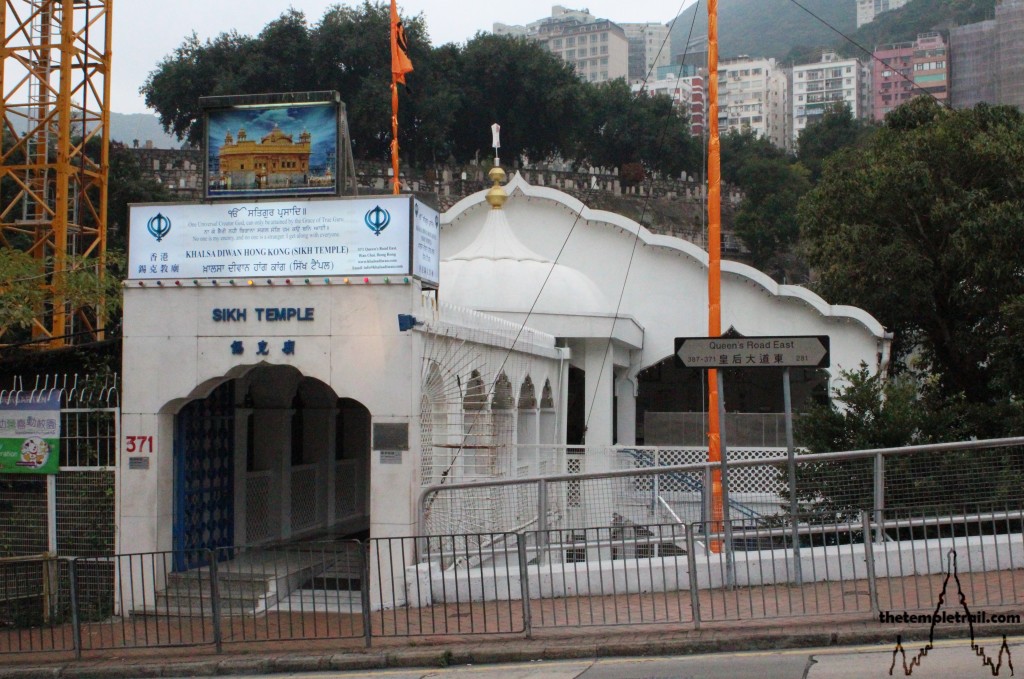
The Sikhs came to Hong Kong with the British Army and in 1901, the first Gurudwara (Sikh temple) was built on the site. It was called the Siri Guru Singh Sabah and was constructed by the local Sikh community and Sikh soldiers from the Burma Infantry of the British Army. Siri Guru Singh Sabah was the name of the organisation that managed the temple, but the name was later changed to the Khalsa Diwan Society. The society was founded in 1902 in the Punjab. The society became an incredible force for unifying the Sikh community around the world, maintaining their cultural identity and institutionalising the Singh Sabha, a movement aimed at re-establishing Sikh values. The gurudwara was an important community centre and in early 1914, it housed Sikhs bound for Canada on a Japanese steamship called the Komagata Maru. The ensuing refusal of Canada to accept the migrants became an infamous event in colonial history.
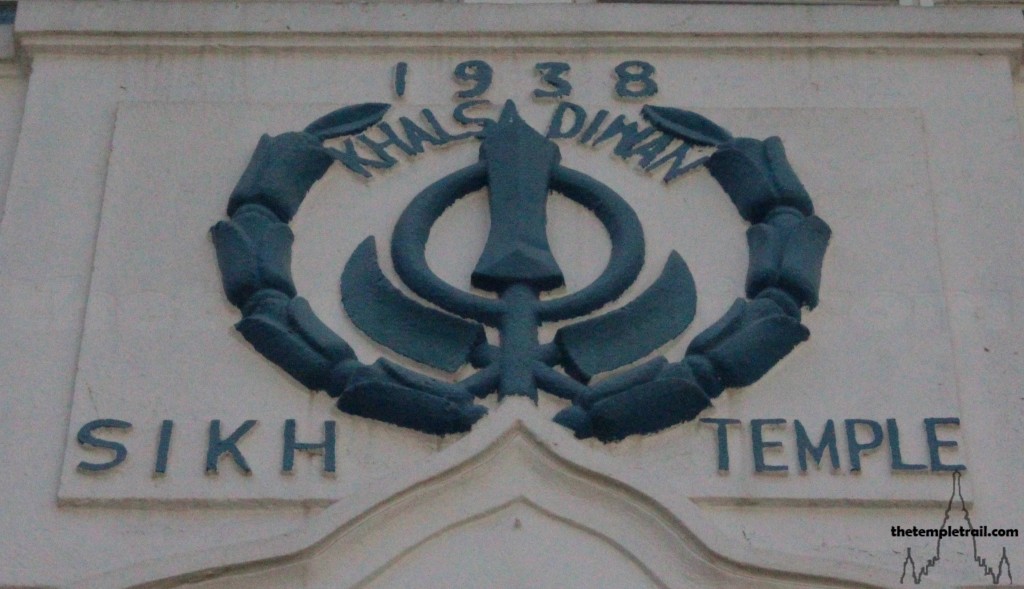
The Hong Kong sangat (community) continued to thrive and by 1930, the Gurudwara was no longer big enough to cater to the congregation. The temple was rebuilt, but only a few years later, during the early 1940s attacks on Hong Kong by the Imperial Japanese Army, the temple was heavily bombed on two occasions. It was during these attacks that the Granthi (religious official), Bhai Nand Singh, was killed while reading the Sri Guru Granth Sahib Ji (holy scripture). The Sri Guru Granth Sahib Ji survived and is still used to this day. When the war was over, the Gurudwara was restored and rebuilt once more by the Sikhs, with help from the local Sindhi Hindu community. As the years progressed, the temple grew and underwent expansions in both the 1980s and the beginning of the new millennium.
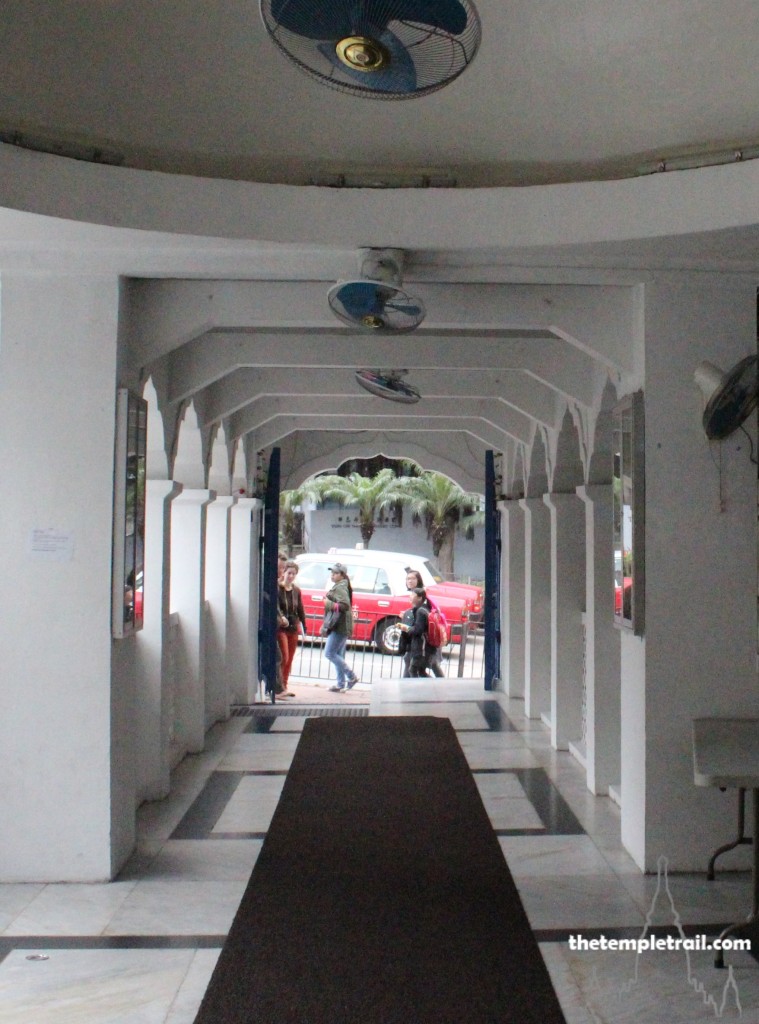
From Queen’s Road, you enter the temple through a covered bridge. Built in the 1980s, it allows you easy access to the Gurudwara. At the end of the walkway, many Sikhs are removing their shoes and greeting each other. When speaking with them, you note that the men all have the name Singh and the women are named Kaur. The word Sikh, means disciple and under their one god, Waheguru, all are equal. Men, when they are baptised into the faith take the name Singh, which means lion. Kaur means princess. The words themselves reflect the equal warrior spirit of a religion that was forced to defend itself against powerful external forces.
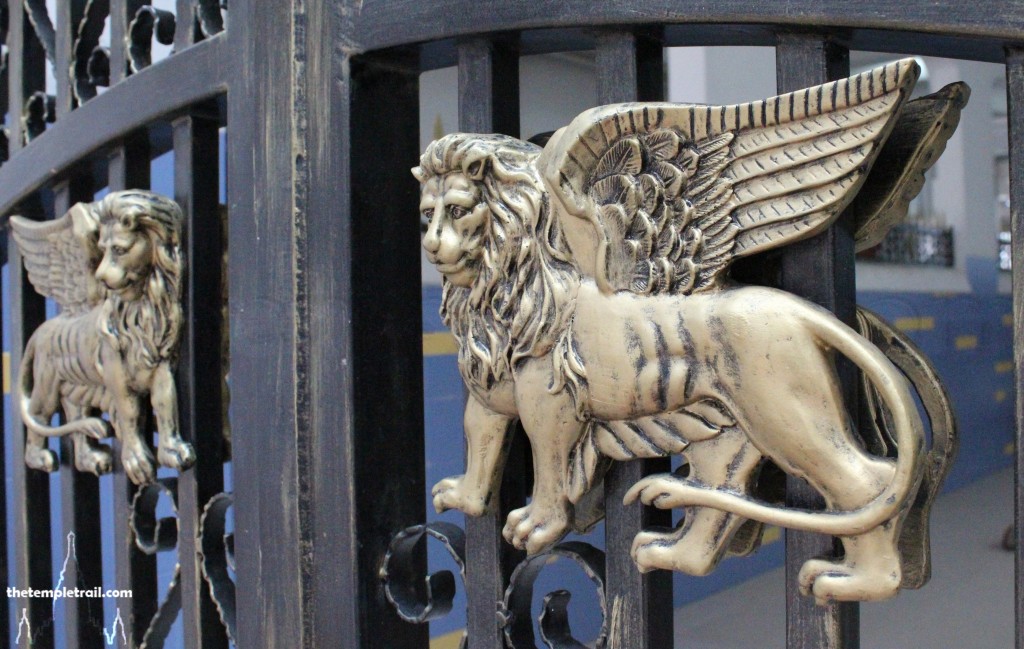
To understand Sikhism, we need to travel back to the 15th century AD and a time of political upheaval and strife in Northern India. The first Guru of Sikhism was born to Hindu parents in the Punjab, in what is now Pakistan, in 1469. Guru Nanak, the founder of the faith, had a vision aged 30 in 1499 and proclaimed that God was ‘neither Hindu nor Mussulman’ (Muslim). After his death in 1538, the Guruship continued through his chosen successor Guru Angad. By this time, the Muslim Mughal forces had expanded into the Punjab. Throughout the rule of the Mughal Empire (1526 – 1857 AD), the Sikhs, along with Hindus faced religious persecution. After many years of struggle and many martyrdoms, the Sikhs militarized under the 6th guru, Guru Hargobind, and the 10th guru, Guru Gobind Singh in 1699. The Guru created the Khalsa, the collective body of baptised Sikhs. The warrior saints fought against the Mughals and Afghans over the next century and in 1799, the Sikh Empire was founded. The state lasted only 50 years before being dissolved into four Princely States of the British Punjab following the Anglo-Sikh Wars.
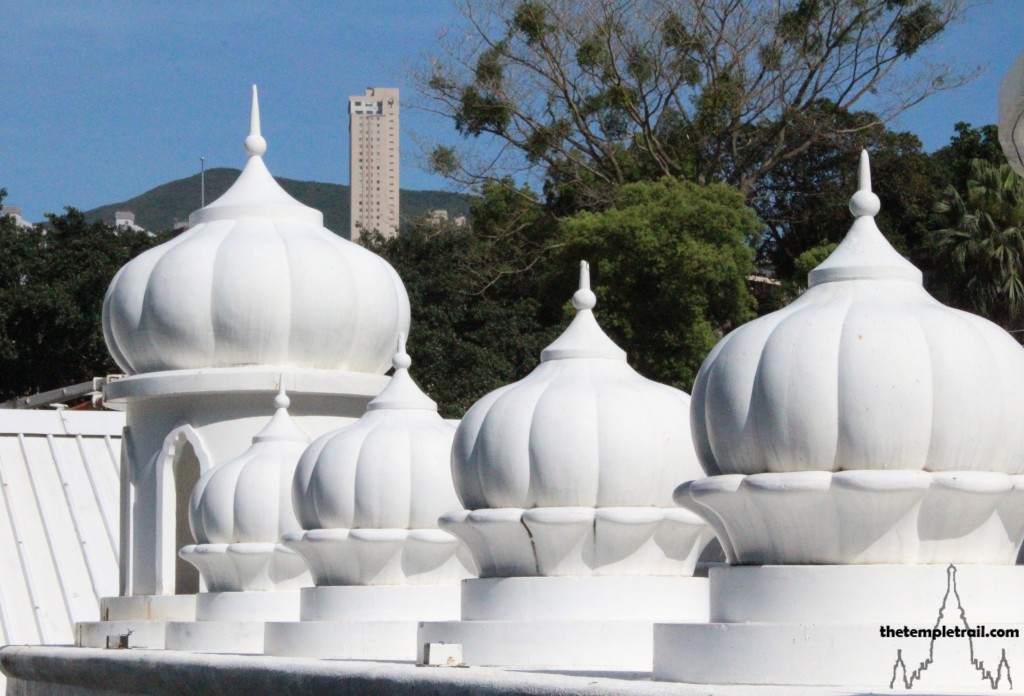
While the martial aspect of Sikhism is very much a part of the Sikh teachings, the central teaching in Sikhism is the belief in one God. Vāhigurū (Waheguru) is the Supreme Being and Sikhs strive to attain mukti (liberation) and become one with him. In order to do this they must practice the Five Virtues: Sat (truth), Daya (compassion), Santokh (contentment), Dharam (discipline), and Vichar (contemplation). Two of the main practices of Sikhism are Simran (spiritual contemplation) and Sewa (selfless service). The meditative nature of Simran is balanced with the external practice of Sewa. Guru Nanak laid out the Three Pillars of Sikhism and these for the moral basis of the religion. Nām Japō is the meditation on the names of God and recitation of hymns from the Sri Guru Granth Sahib Ji. Kirat Karō is earning an honest living through hard work and harnessing the abilities given by God. Vaṇḍ Chhakō is sharing with others and charitable acts. This manifests in the giving of a proportion of earnings to the community in order to help the less fortunate and through helping to prepare and distribute langar, the meal given free to every visitor to a Gurudwara regardless of background.
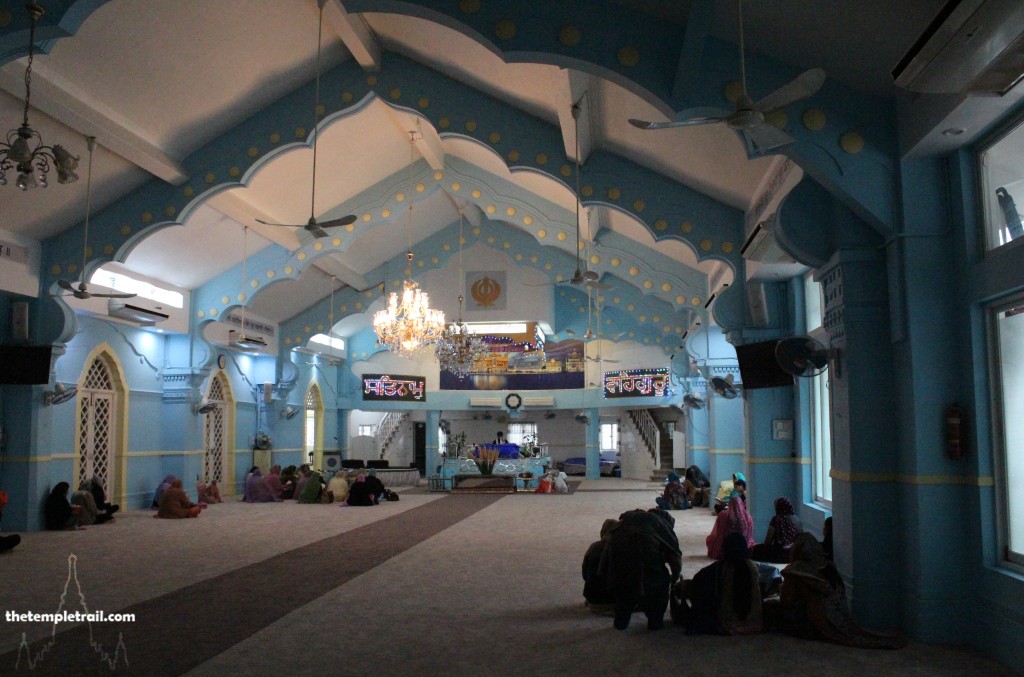
Removing your shoes and covering your head with a cloth provided by the temple, you enter into the Darbar Sahib. This is the main hall of the gurudwara, known also as a Diwan Hall. As your feet feel the soft carpet, you quietly move through the large prayer hall. The sky blue walls of the hall make the atmosphere light and peaceful, while the prayer chants of the assembled ladies fill the room. The hymns are from the Sri Guru Granth Sahib, which is kept in this room. The singing of the hymns is part of the Nām Japō practice. Initiated Sikhs should recite the Five Banis (prayers) every morning. As you approach the front of the hall, you come to the focus of the entire gurudwara. In the centre of the hall, at the back is the Takht (Guru’s Throne) and on this, the Granthi recites from the Sri Guru Granth Sahib Ji.
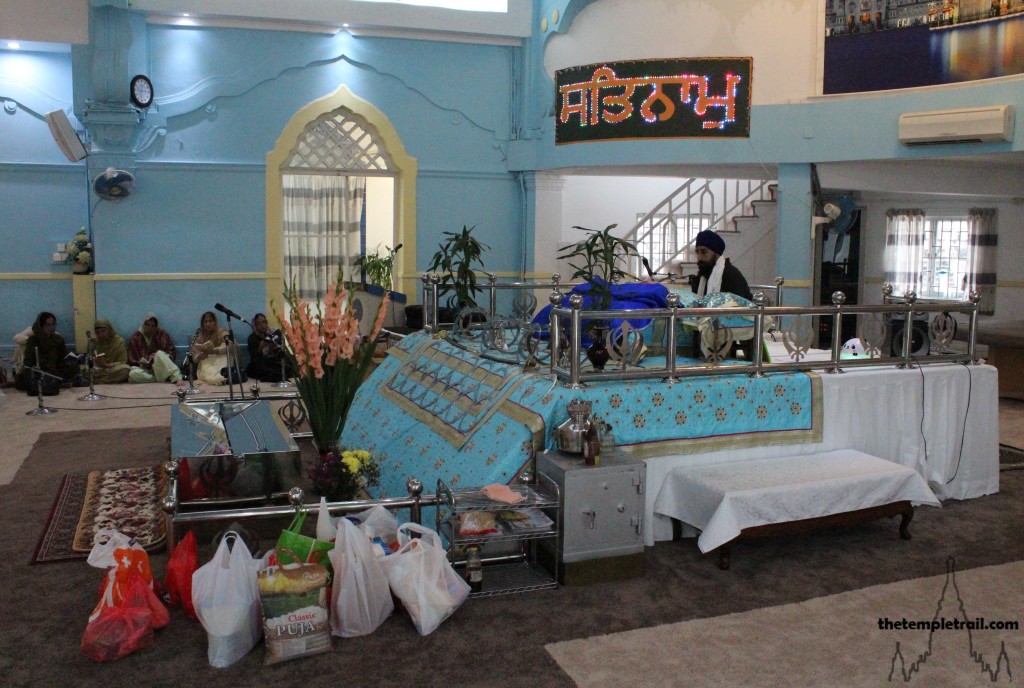
The Sri Guru Granth Sahib Ji is the embodiment of the teachings of the Sikh Gurus. Historically, the Sikhs had 10 living gurus. While the book was compiled throughout the era of the gurus, it was the tenth, Guru Gobind Singh, who declared that the text was his successor. Thus, the Sri Guru Granth Sahib Ji is the 11th and sovereign final guru of Sikhism. In it are the collected teachings of the leaders of the faith and, since 1708, has been the sole guru of the Sikh faithful. Here, in this hall, you observe the Takht on which the text rests. This is essential for any temple and the elevated platform is constructed so as to show respect in the highest for the sacred scripture. As it rests on its Manji Sahib (bed), the Granthi recites from it, leading the congregation in prayer. When the Sri Guru Granth Sahib Ji is not being used, it is covered with a Rumalla (silk cloth). The book must not be touched with unwashed hands or be allowed to touch the floor. Copied of the text can only be printed in Amritsar, the administrative centre of Sikhism and home to the Harmandir Sahib (Golden Temple), the most important Sikh Gurudwara.
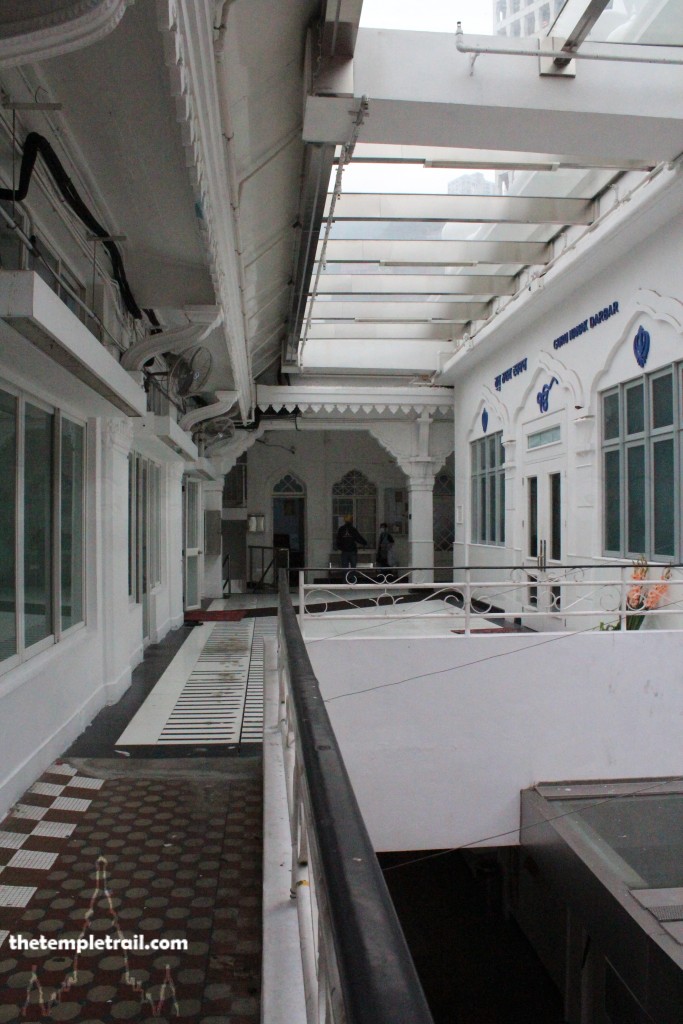
By the side door of the hall, you greet a large man wearing a turban. You note that he carries a small dagger in his belt. This is his Kirpan, one of the Pañj Kakār (Five Ks) worn by Khalsa Sikhs at all times as articles of faith. These are the Kesh (unshorn hair), Kangha (comb), Kara (steel bracelet), Kacchera (underwear shorts) and Kirpan (ritual dagger). Sikhs do not cut their hair, and cover it with the keski (turban). The Kangha is used to hold the hair in place under the turban as well as for coming it. The Kesh is kept to respect God’s perfect creation and to protect the Dasam Dwaar (Tenth Gate), a subtle opening believed to be on the top of the crown. The Kangha reminds Sikhs to be tidy and organized, while the Kara is an unbreakable attachment to God. The Kacchera stops lustful actions and the Kirpan symbolises the courage to stand up against injustice. The Khalsa was started by Guru Gobind Singh in 1699. Guru Gobind Singh’s father was the ninth, Guru Tegh Bahadur. He was martyred in 1675 leaving the nine year old Gobind Rai as his successor. Having witnessed Mughal brutality against his people, Guru Gobind Rai (as he was then called), amassed the Sikhs in 1699 and called for volunteers. Five men did so and he took them into his tent and pretended to behead them. When the men emerged from his tent unharmed, the Guru mixed a solution of water and sweeteners with a double edged sword. This Amrit (nectar) was then given to the five men, henceforth called the Pañj Pi’ārē (Five Beloved Ones), and they, followed by the Guru, became the first baptised Sikhs. The Guru gave them all, and himself, the name Singh, and thus, the Khalsa was born.
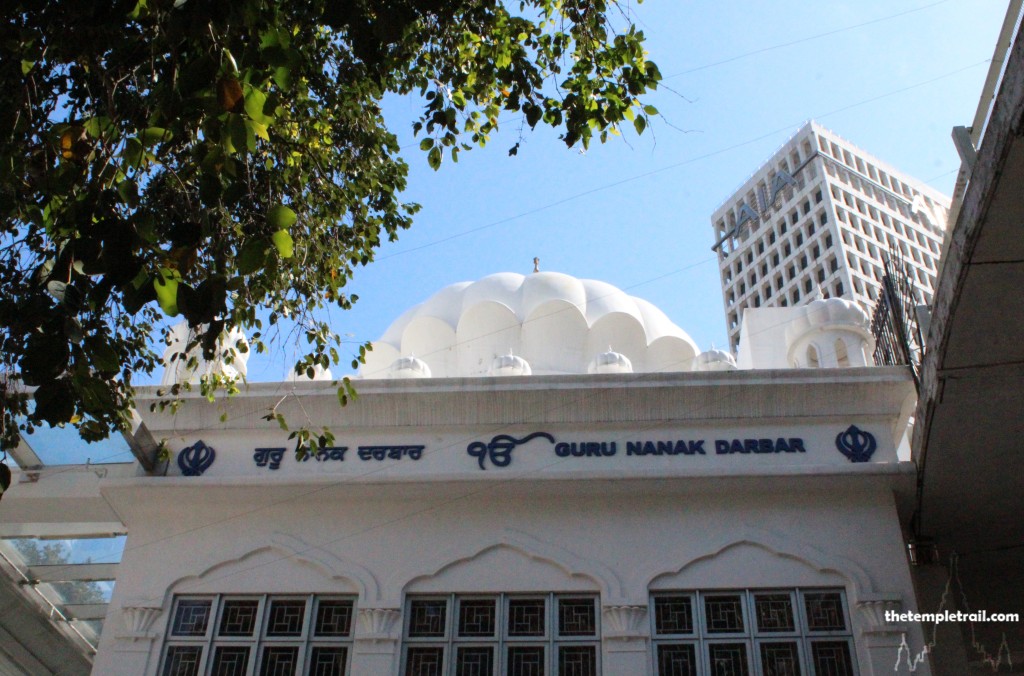
Exiting the prayer hall, you pass another, smaller prayer hall called the Guru Nanak Darbar. This more recent addition to the Gurudwara also contains a beautiful Takht with a canopy. Passing through a corridor and passing the management office, you greet the senior members of the temple. Descending a flight of stairs, you make your way out into a large open courtyard from where you can get a vantage point of the newer extension to the gurudwara. The Guru Nanak Darbar is the top of two floors of the extension. Above it is a wonderful cupola that caps the clean white lines of the structure. The lower floor is of particular interest, and you enter into the Guru Amardas Langar.
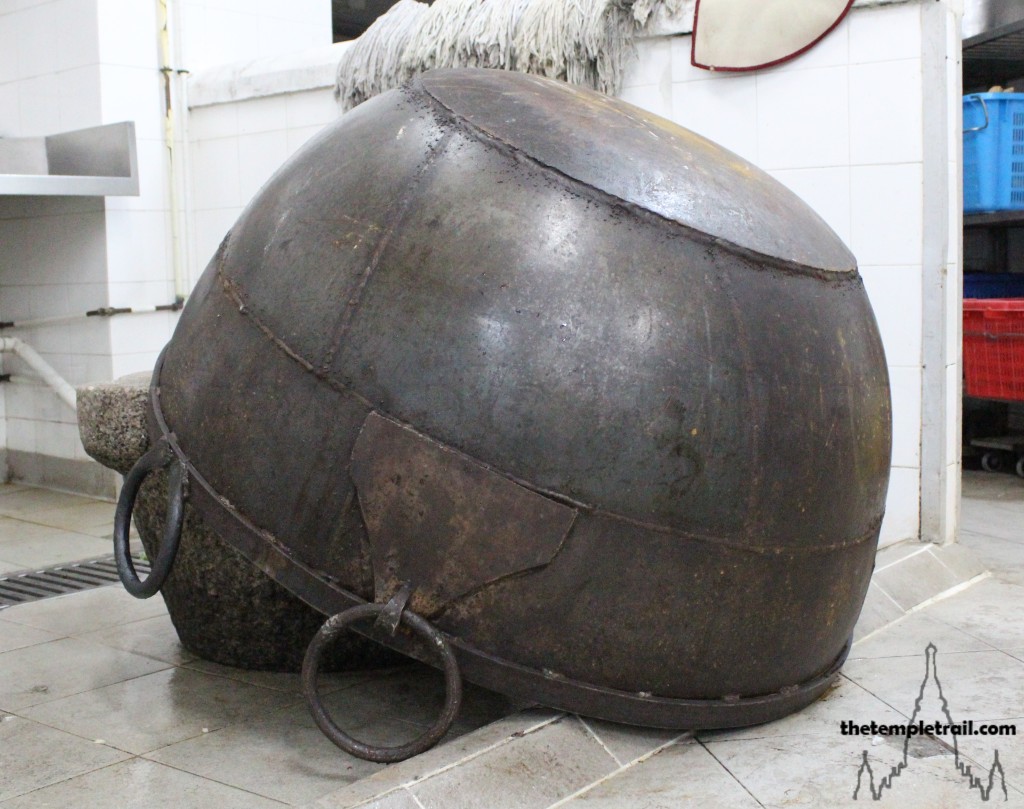
The tradition of langar began with the first guru, Guru Nanak, who implemented it as part of the practice of Vaṇḍ Chhakō. Not only do Sikhs give charitably, but they do so regardless of colour, background or religion. The langar is an expression of part of the slogan Deg Tegh Fateh, meaning Victory to Charity and Arms. While the Sikhs train in fighting arts to stand up for the needy, they need to balance it with feeding them too. The duality of the expression, which is central to Sikhism, is depicted in the Khaṇḍā emblem of their faith. Once more without shoes and with a covered head, you enter the langar named after the third guru, Guru Amar Das, who strengthened the langar free kitchen system. Picking up a tray, you stand in line to receive a food from the temple kitchens. Volunteers distribute the langar to you and on your tray, you receive a sabzi (vegetable curry), dal (lentils), rice and chapattis. The meal is not just a nod at charity, it is a full and filling meal. As you sit cross-legged, side-by-side with the other assembled diners, you see Chinese people and some Europeans all eating the delicious and nourishing meal. While Sikhs do not prohibit meat, they do not prepare any in the langar. The only dietary restriction of Sikhism is that they cannot eat meat from an animal killed in a ritualistic manner, such as halal or kosher. After finishing your food and returning your tray, you look in the communal kitchen and see enormous cooking pots designed to feed hundreds of people.
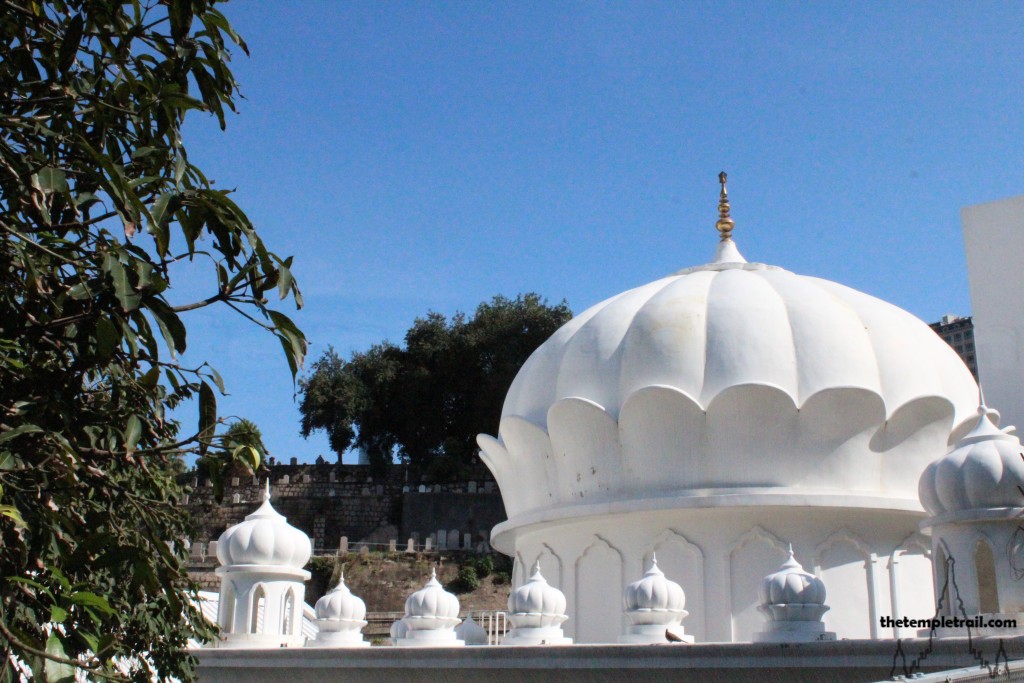
Getting a cup of hot milk tea, you sit in the courtyard and watch at the world go by in the lens of the Gurudwara. The Nishan Sahib flags bearing the Khaṇḍā fly over the temple, declaring the victory of the strong, fearless, yet peaceful Sikh religion. The temple is more than just a religious structure. It is the heart of the community. It is a place of nourishment, both spiritually and physically. It is a place of education and gathering. What is more, this is not only open to the Sikh community. All are welcome to join them in prayer and in eating, regardless of religion. Although Sikhism is one of the world’s younger religions, it is one of the most profound. It preaches charity and strength, acceptance and defiance. It is a truly evolved faith that embraces tradition and openness. Sitting here, in the open air, looking at the structures around you, you feel a deep sense of ease. It is rare to feel more welcomed into a temple, especially as an outsider.
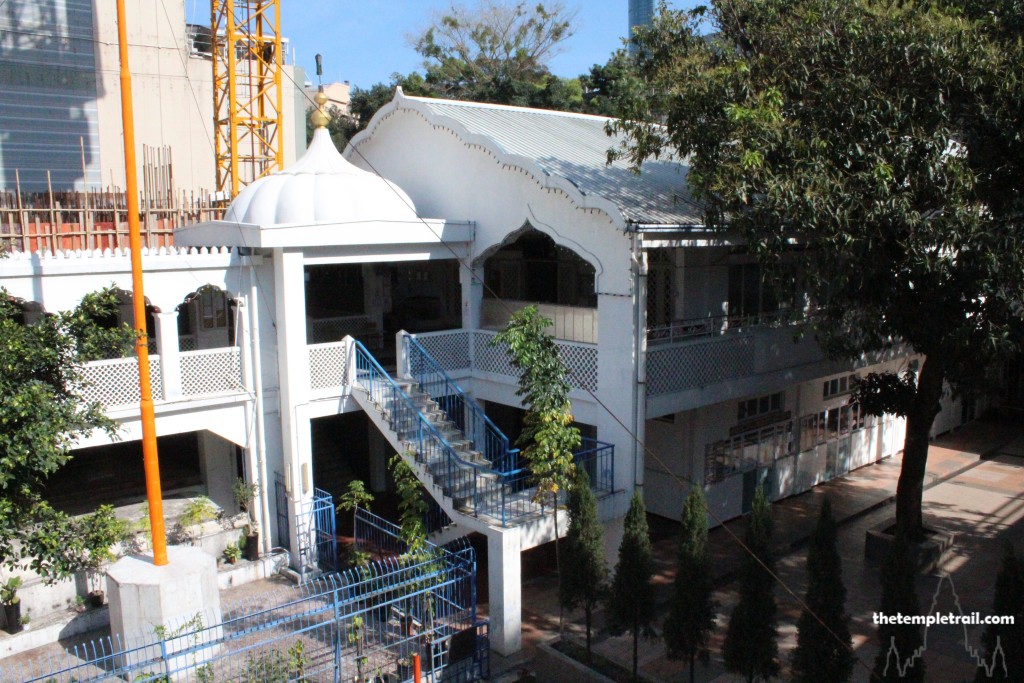
The Temple Trail would like to express its gratitude to the Board and Management Committee of Khalsa Diwan for facilitating the visit to the temple. Special thanks to Mr Gurmel Singh, the Manager of Khalsa Diwan for his insights, support and diligence. Most importantly, thank you to the wonderful, friendly Sikh community at Khalsa Diwan for being so welcoming to an interested visitor.
